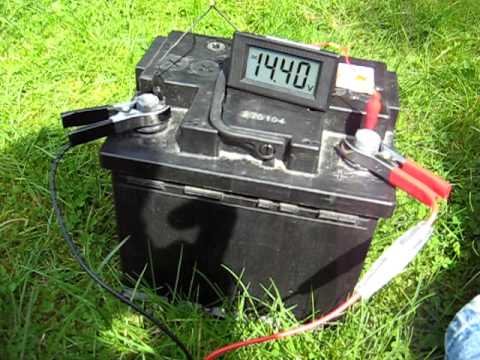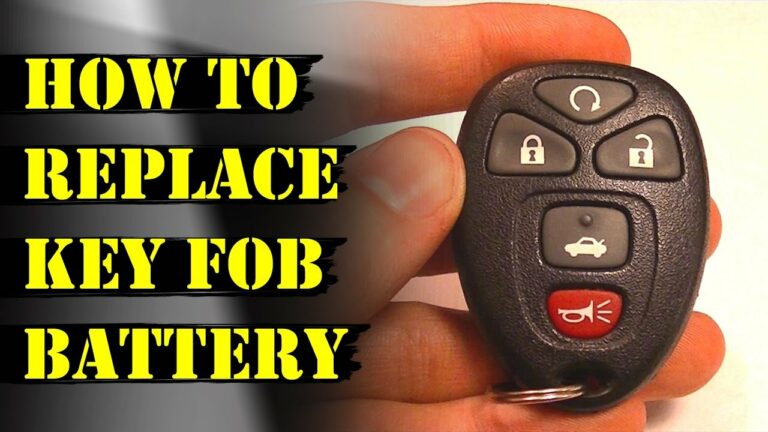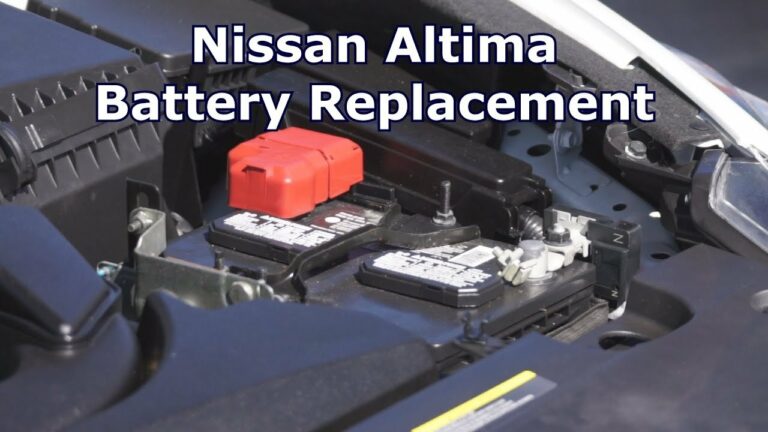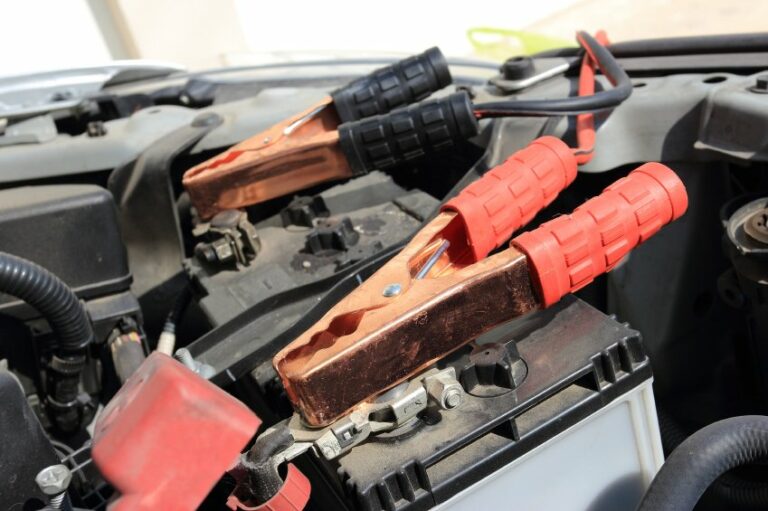Charging A Car Battery With A Solar Charger
Are you wondering how to charge a car battery using a solar battery charger? Look no further! In this article, we will walk you through the simple steps to efficiently charge your car battery using the power of the sun. By harnessing the energy from a solar battery charger, you can keep your car’s battery charged and ready to go, all while reducing your carbon footprint. No more relying solely on traditional charging methods or worrying about being stranded with a dead battery. Let’s dive right in and discover how to charge a car battery using a solar battery charger.
How to Charge a Car Battery Using a Solar Battery Charger?
Charging a car battery using a solar battery charger is an eco-friendly and efficient way to power your vehicle. Solar battery chargers harness the energy from the sun and convert it into electricity, which can be used to charge your car battery. In this comprehensive guide, we will walk you through the process of charging a car battery using a solar battery charger, step by step.
Section 1: Understanding Solar Battery Chargers
What is a Solar Battery Charger?
A solar battery charger is a device that utilizes solar panels to capture sunlight and convert it into electrical energy. This energy can be stored in a battery, such as a car battery, for later use. Solar battery chargers come in various sizes and configurations, ranging from small portable chargers to larger, more powerful systems for charging multiple batteries.
Benefits of Using Solar Battery Chargers
Solar battery chargers offer several advantages over traditional charging methods. Here are some key benefits:
1. Environmentally Friendly: Solar battery chargers utilize clean, renewable energy from the sun, reducing reliance on fossil fuels and minimizing carbon footprint.
2. Cost-effective: Solar energy is free, so once you have invested in a solar battery charger, you can enjoy the benefits of charging your car battery without incurring additional costs.
3. Portability: Many solar battery chargers are compact and lightweight, making them easy to carry and use wherever you go.
4. Versatility: Solar battery chargers can charge various types of batteries, including car batteries, boat batteries, RV batteries, and more.
5. Independence: With a solar battery charger, you are not limited to traditional power sources. You can charge your car battery even in remote locations where electricity may not be readily available.
Section 2: Choosing the Right Solar Battery Charger
Factors to Consider
When selecting a solar battery charger for your car battery, there are a few key factors to consider:
1. Power Output: The power output of the solar battery charger determines how efficiently it can charge your car battery. Check the wattage and amperage ratings to ensure they are compatible with your battery’s requirements.
2. Size and Portability: Consider the size and weight of the solar battery charger, especially if you plan to use it while traveling or camping.
3. Durability and Weather Resistance: Look for a solar battery charger that is built to withstand outdoor conditions and is resistant to water, dust, and other environmental factors.
4. Charging Controller: A charging controller helps regulate the charging process, preventing overcharging and optimizing efficiency. Make sure the solar charger you choose has a built-in charging controller or is compatible with one.
5. Additional Features: Some solar battery chargers come with built-in USB ports, LED indicators, and other convenient features. Determine which features are important to you.
Section 3: Preparing the Solar Battery Charger
Check the Solar Panels
Before using your solar battery charger, inspect the solar panels for any damage or dirt that may obstruct sunlight absorption. Clean the surface of the panels with a soft cloth or brush and ensure they are free from debris.
Positioning the Solar Panels
Place the solar panels in an area where they can receive maximum sunlight exposure. Clear any obstructions, such as trees or buildings, that may cast shadows on the solar panels. For optimal charging, position the panels at an angle towards the sun.
Connecting the Solar Panels
Depending on the type of solar battery charger you have, you may need to connect the solar panels to the charger using cables and connectors provided. Follow the manufacturer’s instructions for proper installation.
Section 4: Connecting the Solar Battery Charger to Your Car Battery
Locating the Car Battery
Identify the location of your car battery. In most vehicles, the battery is located under the hood, but in some cases, it may be in the trunk or under a seat. Consult your car’s manual if you are unsure.
Disconnecting the Car Battery
Before connecting the solar battery charger, it is crucial to disconnect the car battery to ensure safety. Start by turning off the engine and removing the keys from the ignition. Locate the negative (-) terminal of the battery and use a wrench to loosen the nut or bolt holding the cable in place. Once loosened, remove the negative cable from the terminal. Repeat the same process for the positive (+) terminal.
Connecting the Solar Battery Charger
With the car battery safely disconnected, connect the solar battery charger to the battery terminals. The charger should have positive (+) and negative (-) clamps or connectors. Connect the positive clamp/connector to the positive terminal of the battery and the negative clamp/connector to the negative terminal. Ensure a secure and tight connection.
Section 5: Monitoring and Charging the Car Battery
Charging Indicator
Most solar battery chargers have built-in LED indicators or digital displays that show the charging status. Refer to the charger’s manual to understand the various indicators and their meanings.
Charging Time
The time it takes to fully charge a car battery using a solar battery charger can vary depending on factors such as the charger’s power output, battery capacity, and current charge level. It is recommended to refer to the charger’s manual for an estimated charging time or consult with a professional.
Monitoring the Charging Process
Regularly check the charging status of your car battery using the indicators on the solar battery charger. Monitor the battery’s voltage and ensure it does not exceed the recommended levels. If needed, adjust the position of the solar panels to maximize sunlight exposure.
Disconnecting the Solar Battery Charger
Once the car battery is fully charged, or when you no longer need to charge it, disconnect the solar battery charger. Start by turning off the charger if it has an on/off switch. Then, remove the clamps/connectors from the battery terminals, starting with the negative (-) terminal and then the positive (+) terminal. Make sure the clamps/connectors do not touch each other or any metal surfaces.
Section 6: Tips for Using a Solar Battery Charger Effectively
Choose the Right Season and Time
Solar battery chargers are most effective when used during sunny seasons and when the sun is at its highest point in the sky. Charging your car battery during peak sunlight hours will maximize the energy absorption.
Keep the Solar Panels Clean
Regularly clean the solar panels to prevent dirt, dust, and other debris from blocking sunlight absorption. This will ensure maximum efficiency and charging performance.
Position the Solar Panels Optimally
Position the solar panels in a location where they receive direct sunlight without any obstructions. Adjust the angle of the panels throughout the day to track the sun’s movement and optimize energy collection.
Monitor the Battery’s Voltage
Keep an eye on the battery’s voltage using the charger’s indicators or a multimeter. Ensure the voltage remains within the recommended range to prevent overcharging or undercharging.
Section 7: Safety Precautions
Read the Instructions
Before using a solar battery charger, thoroughly read the manufacturer’s instructions and safety guidelines. Familiarize yourself with the charger’s features and operation to ensure safe usage.
Protective Gear
When working with car batteries, wear appropriate protective gear, such as gloves and safety glasses, to prevent any acid spills or accidents.
Avoid Overcharging
Overcharging a car battery can damage its cells and shorten its lifespan. Monitor the charging process regularly and disconnect the solar battery charger once the battery is fully charged.
Proper Storage
When not in use, store your solar battery charger in a cool and dry place. Avoid exposing it to extreme temperatures or harsh weather conditions, as they can adversely affect its performance and durability.
Section 8: Conclusion
Charging a car battery using a solar battery charger provides a sustainable and convenient solution for maintaining your vehicle’s power. By harnessing the energy from the sun, you can charge your car battery wherever you go, free from traditional power sources. Follow the steps outlined in this guide to safely and effectively charge your car battery using a solar battery charger.
Charging a Car Battery with a Solar Panel and Charge Controller
Frequently Asked Questions
Can I charge a car battery using a solar battery charger?
Yes, you can charge a car battery using a solar battery charger. Solar battery chargers are designed to convert sunlight into usable electricity, which can then be used to charge a car battery.
How does a solar battery charger work?
A solar battery charger consists of photovoltaic cells that convert sunlight into electrical energy. This energy is then stored in a battery, which can be used to charge other devices such as car batteries.
What type of solar battery charger do I need for a car battery?
You will need a solar battery charger specifically designed for charging car batteries. These chargers come with features like a higher voltage output and the ability to handle the higher charging requirements of car batteries.
Do I need any special equipment to charge a car battery with a solar battery charger?
In addition to the solar battery charger, you will need a solar panel, connecting cables, and a charge controller. The solar panel captures sunlight, the connecting cables transfer energy from the panel to the charger, and the charge controller regulates the charging process to prevent overcharging.
Is it possible to charge a car battery using a solar battery charger on a cloudy day?
Yes, it is possible to charge a car battery using a solar battery charger on a cloudy day. While the charging efficiency may be lower compared to a sunny day, solar battery chargers are still able to generate electricity from diffuse sunlight on cloudy days.
How long does it take to charge a car battery using a solar battery charger?
The charging time will depend on factors such as the capacity of the battery, the rating of the charger, and the amount of sunlight available. On average, it may take several hours to a full day to charge a car battery using a solar battery charger.
Final Thoughts
Charging a car battery using a solar battery charger can provide an eco-friendly and cost-effective solution. By harnessing the power of the sun, you can conveniently charge your car battery without relying on traditional electricity sources. This method not only reduces carbon emissions but also saves you money in the long run. With the easy-to-use solar battery charger, you can efficiently charge your car battery and ensure its optimal performance. So, if you’re looking for a greener and more affordable way to charge your car battery, consider using a solar battery charger.



